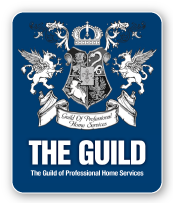

Last Updated: Sep 7, 2025
Carpet Cops follows standards set by the IICRC.
Steps
Dry vacuuming – For removal of particulate soil buildup, dry vacuuming is essential prior to applying a cleaning agent. A soil suspension pre-spray should be allowed to soak so soils can come to the surface,
Chemical action – Chemical action may be accomplished in one of two ways:
Preconditioning – In heavy-soiling situations, a preconditioner that may contain solvents for emulsifying oily soils must be applied to entry, pivot, and high-traffic areas prior to the application of the hot water extraction cleaning method. For stain-resistant carpet, this preconditioner must be anionic, nonionic, or combinations thereof and have a pH of 10 or less. For wool carpet, this preconditioner must range in pH from 5.5 to 8. Diluted preconditioners containing dry solvent additives must not contribute appreciable quantities of VOCs (volatile organic compounds) to the air within the structure.
Preconditioners may be applied through hand-pump, electric, or venturifeed sprayers. Product manufacturers' directions relating to the quantity of a preconditioning agent applied to a specified number of square feet of carpet must be followed.
Cleaning Agent Application – In normal-soiling situations (or following preconditioning), diluted, anionic, nonionic, or combination rinse or cleaning detergents should be applied to the carpet during the injection phase of hot water extraction cleaning. This is essential for suspending soils in nonpreconditioned areas.
Heat or Temperature – Under normal circumstances, both preconditioners and rinse detergent solutions may be increased in temperature (mixed hot) to increase detergent activity. Additional activity relating to temperature is achieved during the soil extraction phase that follows.
Agitation – Preconditioner application, where required, must be followed with uniform cleaning agent distribution using hand brushing or mechanical brush action (employing reel or rotary agitation equipment). To provide good-quality cleaning and proper lubrication of carpet yarns during agitation, product manufacturers' recommended dilution rates and application quantities (gallons of cleaning solution per square feet cleaned must be observed. Additional agitation may be achieved during the extraction phase using higher solution pressures.
Time – Preconditioners, when used, must remain in heavily soiled areas for five to ten minutes for uniform soil suspension to be accomplished. The use of water-based preconditioning agents in heavily soiled entry and traffic areas also may prolong drying slightly.
Soil Extraction – Once preconditioner application and agitation are accomplished in heavily soiled areas, suspended soil must be flushed from carpet yarns using hot water injection/extraction equipment. Multiple passes may be required to fully flush suspended soil from the base of yarns, and, if so, follow-up extraction-only passes with floor tools are required to reduce moisture levels and minimize drying time. The quantity of solution injected must be compatible with the vacuum's extraction capability in order to avoid over wetting. Solution temperatures should be as high as possible for maximum activation of cleaning agents, resulting in minimum chemical use. Carpet construction, dye fastness, and other factors must be considered. High temperature extraction (1300+ on the carpet) also may contribute to the removal or control of biocontaminants. All extracted solutions must be disposed of in accordance with local, state, and federal regulations.
Nap Setting – Nap setting or grooming must be accomplished following hot water extraction cleaning for optimum appearance. In all cases, nap setting must be accomplished for uniform distribution of post cleaning treatments.
Drying – Complete drying will be accomplished within 24 hours (depending on soiling conditions and ambient humidity).
When multiple-pass cleaning is required on heavily soiled carpet, and especially when post cleaning additives are applied to carpet following hot water extraction cleaning, longer unassisted drying times (12 –24 hours) may be anticipated. Therefore, technicians must consider procedures to expedite drying and, thus, to avoid problems associated with over wetting. Over wetting or prolonged drying may result from operator error.
 home
home
 contact
contact
 About Us
About Us
 Services
Services
 Loudon Homemove
Loudon Homemove


